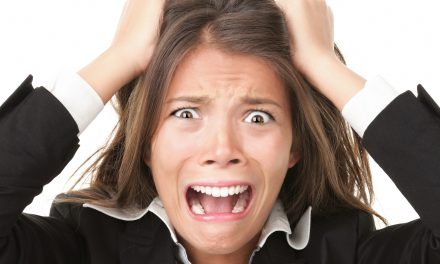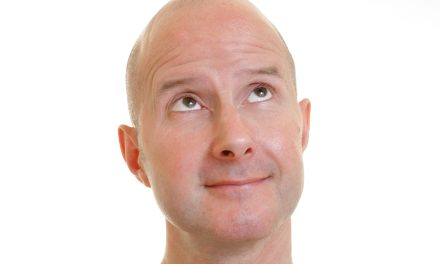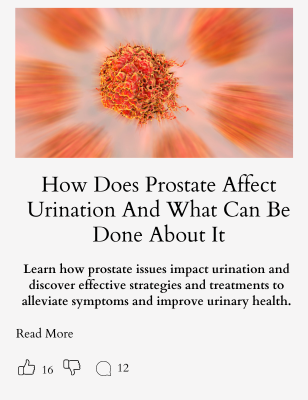Hair loss can feel alarming for many women, sparking concerns about health and appearance. Despite fears, shedding hair is a normal part of the hair growth cycle.
It’s typical to lose about 50 to 100 strands daily, which usually balances out with new hair growth and isn’t visibly noticeable.
Different factors can contribute to more noticeable hair loss in women. These include stress, hormonal changes, and certain health conditions.
Identifying the exact cause of hair loss can be complicated. Female-pattern hair loss is a common reason behind thinning hair, where genetics often play a significant role.
Understanding when hair loss becomes excessive or abnormal is crucial, as it may indicate an underlying issue.
Seeking help from a dermatologist can provide peace of mind and effective solutions, whether the cause is medical or lifestyle-related. Gaining insight into hair loss and its treatments can empower women to tackle this common issue with confidence.
Key Takeaways
- Normal hair loss ranges from 50 to 100 hairs per day.
- Causes include hormonal changes, genetics, and lifestyle.
- Dermatologists offer diagnoses and treatment options.
Understanding Hair Loss in Women
Hair loss in women can happen due to different causes, and it’s important to understand the basics. Key factors to examine include the hair growth cycle, types of hair loss, and how female and male pattern baldness differ.
The Hair Growth Cycle
Hair growth follows a cycle with three main phases: anagen, catagen, and telogen.
The anagen phase is the most active, with hair growing for two to seven years. About 85% of hair is in this stage at any time. The catagen phase is a short transition period lasting about two weeks, where growth halts, and the hair follicle shrinks.
During the telogen phase, hair rests for around three months before shedding. New hair then begins its cycle in the same follicle.
Disruptions in these phases can cause abnormal hair loss. Understanding how each phase works aids in identifying causes and potential treatments.
Common Types of Hair Loss in Women
Androgenetic alopecia is the most frequent type, also known as female pattern baldness. It’s characterized by a diffuse thinning on the top of the scalp. Factors like genetics and hormonal changes often contribute.
Another type is telogen effluvium, where hair prematurely enters the telogen phase, causing noticeable shedding.
Additionally, alopecia areata involves patchy hair loss due to an autoimmune response.
Identifying the type of hair loss is crucial for finding effective treatment options. Evaluating symptoms and patterns can guide decisions on whether medical intervention is needed.
Differences Between Female and Male Pattern Baldness
Female and male pattern baldness differ in pattern and progression.
Women often experience a wider or more diffuse thinning on the crown but rarely develop a fully bald scalp. Men typically see receding hairlines and complete bald patches, mainly at the crown.
These variations stem from hormonal differences and the role of androgens in hair loss. Female pattern baldness is less likely to result in total scalp exposure. Treatments also vary, as women might use different medications or therapies compared to men. Understanding these differences helps tailor approaches for managing hair loss in each gender.
Factors Contributing to Hair Loss
Hair loss in women can be caused by a variety of factors, including hormonal changes during menopause, periods of stress, certain medical conditions like alopecia areata, and nutritional deficiencies. Understanding the causes can help in identifying potential treatments and solutions.
Hormonal Changes and Menopause
Hormonal shifts, especially during menopause, play a significant role in hair loss. As women age, the level of estrogen decreases, which can lead to female pattern hair loss.
Estrogen supports hair growth, so its reduction allows the hormone dihydrotestosterone (DHT) to shrink hair follicles.
The onset of menopause might also coincide with an increase in stress and potential thyroid hormone fluctuations, all of which contribute to hair thinning.
Eating a balanced diet and maintaining a healthy lifestyle can help mitigate some of these effects.
Stress Impact on Hair Health
Emotional and physical stress can greatly affect hair health. High levels of stress may lead to a scalp condition called telogen effluvium, which causes hair to fall out after stressful events.
Stress can also exacerbate conditions like alopecia areata, where the body’s immune system attacks hair follicles.
Practices like mindfulness, meditation, and regular exercise can help reduce stress levels. Taking steps to manage stress may protect against further hair loss.
Medical Conditions and Hair Loss
Certain medical conditions are known to contribute to hair loss. Alopecia areata, an autoimmune disorder, causes sudden hair loss in patches. Undergoing chemotherapy for cancer treatment is another common cause.
Thyroid issues, polycystic ovary syndrome, and other underlying health conditions can affect the hair growth cycle as well. Identifying and treating these conditions early can potentially reverse hair loss.
Nutritional Deficiencies
Hair relies on certain nutrients to remain healthy and strong. Deficiencies in vitamins and minerals like iron, vitamin D, and zinc can lead to thinning hair.
Women often experience this type of loss if their diet lacks variety or is overly restrictive.
Ensuring a diet rich in leafy greens, lean proteins, and healthy fats can provide necessary nutrients and help maintain hair health. Supplements may also be considered under a doctor’s guidance to address specific deficiencies.
Hair Loss Linked to Lifestyle
Certain lifestyle choices can lead to hair loss in women. Key factors include specific hairstyles and the use of various medications, both of which can significantly impact hair health.
Tight Hairstyles and Traction Alopecia
Tight hairstyles, such as braids, ponytails, and buns, can cause traction alopecia. This condition results from persistent tension on the hair and scalp. Hair follicles are weakened over time, leading to increased hair shedding.
Women who often wear tight hairstyles are at higher risk. Continuous pressure on the hair roots can cause permanent damage.
It is crucial for individuals to recognize early signs, like scalp redness or soreness, as these can indicate traction alopecia. Switching to looser hairstyles can help prevent further hair loss and promote healthier growth.
Impact of Medications
Certain medications are known to cause hair loss as a side effect. For instance, drugs like anticoagulants and chemotherapy agents are particularly associated with increased hair shedding.
People usually notice hair loss a few weeks after starting a new medication.
Women on long-term medication should be aware of potential hair loss risks.
It’s important to discuss any concerns with a healthcare professional. They may recommend alternatives or adjustments to medication dosages to mitigate this side effect. Understanding these risks allows for better management of hair health while ensuring medical needs are also addressed.
Diagnosis and When to See a Dermatologist
Women often experience hair thinning and shedding, which can be concerning. An accurate diagnosis is key to understanding the cause and determining the best treatment. Knowing when to consult a dermatologist can make a big difference in managing hair health.
Assessing Hair Thinning and Shedding
Thinning hair is a common problem, especially as women age. A standard way to assess this is to note daily hair loss.
Shedding up to 100 strands a day is typical, but more could indicate a problem. Noticing bald patches or significant hair in combs may require attention.
A dermatologist can help by evaluating hair loss patterns. He or she may check whether the hair shed is full-length or broken, which helps determine underlying conditions.
Hair pull tests are sometimes used to see how easily strands come out, providing more insight into the issue.
Scalp Analysis and Hair Follicle Health
Scalp health is crucial for healthy hair. A dermatologist examines the scalp for signs of conditions like inflammation or infections, which might cause hair loss.
Dermoscopic devices may be used to get a close look at the hair follicles and scalp conditions.
Dermatologists also check the density of hair follicles to assess their function. In some cases, a scalp biopsy may be conducted to study follicle health more closely.
By understanding follicle and scalp conditions, potential treatments can be tailored for optimal results.
Treatment Options for Hair Loss
Various treatment options exist for women experiencing hair loss. These methods range from medicated solutions to new therapies under research, offering several paths to regrow or restore hair.
Medicated Treatments and Their Uses
Medications are often the first step in treating hair loss.
Minoxidil, commonly known as Rogaine, is a topical treatment that may promote hair regrowth for some users.
Available over-the-counter, minoxidil suits various types of hair loss, especially female pattern hair loss.
Finasteride, or Propecia, is another option, though it’s primarily prescribed for men. Some research has explored its effectiveness for women, but results vary.
Before using any medication, consulting a healthcare provider helps ensure safety and efficacy.
Hair Regrowth and Restoration Techniques
For those seeking non-medicated solutions, several surgical and non-surgical methods are available.
Hair transplant surgery provides an option by moving hair from denser areas to thinning regions on the scalp. This technique can offer long-lasting results but comes with costs and recovery time.
Low-level laser therapy (LLLT) is a non-invasive approach that may improve hair thickness by stimulating hair follicles. This method involves devices like laser combs or caps. Consistent use as prescribed is essential for effectiveness.
Novel Therapies and Research
Emerging treatments and research continue to offer hope in hair restoration.
JAK inhibitors, traditionally used for other conditions, show promise in early studies for treating certain types of hair loss. Research is ongoing, and these treatments are not yet widely available for hair loss.
Stem cell therapy and platelet-rich plasma (PRP) are other advanced options under exploration. They aim to encourage hair regrowth by utilizing the body’s natural healing processes.
While promising, these techniques are in experimental stages and should be considered carefully.
Preventing Hair Loss and Promoting Healthy Hair
Hair loss can be a concern for many women, but it is often manageable with the right lifestyle choices and nutritional support. Incorporating certain habits and nutrients can boost hair strength and growth while reducing shedding.
Lifestyle Adjustments for Hair Health
Maintaining a healthy lifestyle plays a critical role in preventing hair loss.
Managing stress is important because high stress levels can lead to hair shedding. Regular exercise and practices like yoga or meditation help in reducing stress.
Proper hair care is essential. Gentle handling when brushing and avoiding excessive heat from styling tools can prevent breakage.
Washing hair with mild shampoos and not too frequently can help maintain natural oils that protect the hair.
For those experiencing significant hair thinning, consulting a professional for advice and treatment options can be beneficial.
Nutrition and Supplements for Growth
Nutrition deeply impacts hair health. Consuming a balanced diet rich in proteins, vitamins, and minerals supports growth.
Biotin, a key vitamin, is often associated with stronger hair. Foods like eggs, nuts, and leafy greens supply necessary nutrients. Iron, zinc, and vitamins A and E are also important.
For individuals looking to support hair growth, certain supplements can be useful.
While supplements like biotin may help, it’s essential to consult with a healthcare provider before starting any new regimen to ensure safety and suitability.
Understanding the Psychological Impact of Hair Loss
Hair loss can take a significant emotional toll on many individuals, affecting their self-esteem and confidence. This is particularly true for women who experience alopecia or baldness.
It’s important to explore effective coping strategies and address the emotional stress that can accompany hair loss.
Coping with Alopecia and Baldness
Alopecia, which includes conditions like alopecia areata, can lead to partial or complete hair loss.
Many women struggle with feelings of embarrassment or self-consciousness when dealing with baldness.
Seeking support from friends or family can be beneficial.
Engaging with support groups or online communities allows individuals to share their experiences and gain reassurance from others facing similar challenges.
Some find creative outlets, such as hats or wigs, which help boost their confidence and offer a sense of control over their appearance.
Professional counseling can also provide support for those struggling with acceptance.
Therapists can help individuals work through their emotions, offering strategies to manage their thoughts and feelings.
Cognitive behavioral therapy (CBT) is often effective in changing negative thought patterns and reducing anxiety related to appearance.
Addressing the Emotional Toll
Hair loss can create a significant psychological impact. Women often grapple with feelings of sadness, frustration, or even depression as they come to terms with full-body hair loss.
The societal pressure to maintain a certain appearance can exacerbate these feelings.
Understanding the triggers and learning to manage the resulting emotional stress is crucial.
It is essential to focus on the strengths and qualities that go beyond appearance.
Building self-worth through activities that emphasize personal skills or talents can provide a positive focus.
Encouraging mindfulness and stress-reduction techniques, like meditation or yoga, can help alleviate some of the anxiety.
In essence, cultivating a healthy mindset is key in addressing the emotional aspect of hair loss.
Frequently Asked Questions
Hair shedding in women is a common concern. Knowing what is normal and when to be worried can help in managing hair health effectively.
What amount of hair loss should be concerning for females?
Losing about 50 to 100 hairs a day is typical for most women. If the amount increases noticeably or large clumps are seen, it may be time to seek advice.
What are the signs that I am losing an excessive amount of hair?
Signs include finding large amounts of hair in your brush, an increase in hair left in the shower, or thinning patches on the scalp. These might indicate unusual shedding.
At what point should a woman be concerned about hair loss?
Concern should arise if there’s a noticeable change in hair density, especially if patches of scalp become visible. Consulting a healthcare professional can provide clarity on underlying issues.
What is considered normal hair shedding for women?
Normal shedding involves losing a small amount of hair during daily brushing or showering. It’s part of the natural hair growth cycle and restores itself over time.
Can vitamin deficiencies lead to hair loss in women, and if so, which vitamins are involved?
Yes, deficiencies in vitamins like B12, D, iron, and zinc can impact hair health. These nutrients play critical roles in maintaining healthy hair growth. A balanced diet helps prevent shortages.
What does normal hair shedding look like in the shower for females?
Normal shedding in the shower might result in a few strands on the shower floor or in your hands while washing. If clumps appear daily, it could be an indicator of excessive shedding.
















